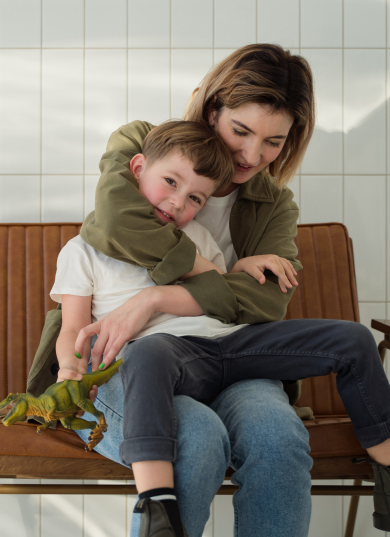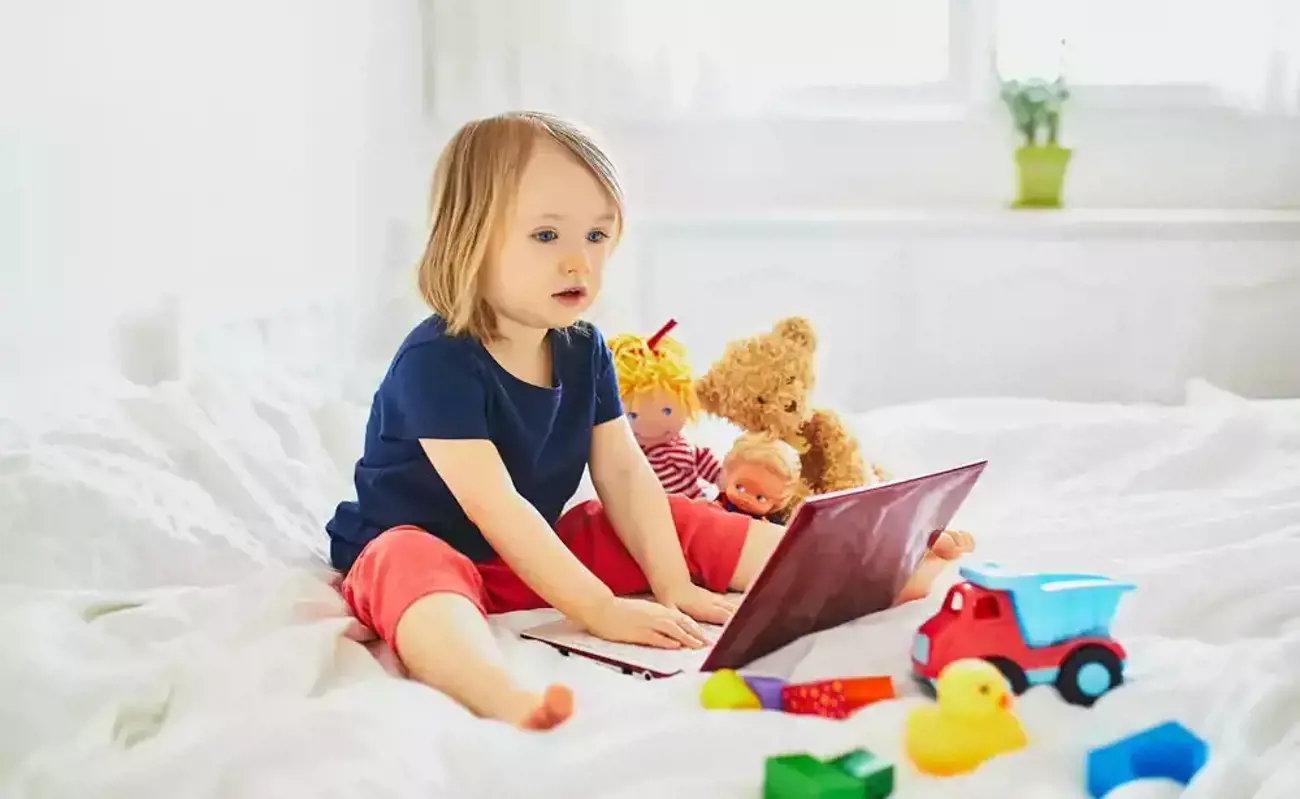Being online is a big part of all our lives, and from an early age many children are busy exploring virtual environments and tapping into entertaining and educational online content. There are websites to visit, games to play and shows to stream, and all this action opens up a degree of risk.
There’s the chance that your under five might wander into inappropriate content, be contacted by a stranger or share their personal information, but the good news is that you can take steps to avoid this happening, with some guidance from the government.
What e-safety advice is on offer for parents of young children?
The eSafety Commissioner has published an Online Safety for Under 5s booklet to help adults keep little ones safe in cyberspace.
In this resource, the government recognises that a certain amount of quality, supervised online time can be beneficial for young children because it provides opportunities to, ‘Explore their creativity, improve their language skills, solve problems, think critically and build relationships.’
At the same time, parents must be aware of the risks of being online and take responsibility for under fives’ online safety by helping children to:
- Be safe;
- Be kind;
- Ask for help, and;
- Make good choices.
The government has provided lots of practical strategies to do this, so here’s a rundown of their e-safety advice.
How can you help your under five to be safe online?
Being safe involves putting online protections in place and helping your child understand that the online world is a connected world, so certain information shouldn’t be shared. The government advises you to:
- Set up devices safely and ensure they’re only used in communal areas
This means you should use parental controls and safe search settings on the online accounts, apps and devices your under five uses. Google Safe Search and Kiddle are two child-friendly search engines, and you can block, filter or monitor your child’s online access to make their experience safer.
Parental controls and safe search filters aren’t 100 per cent reliable, though, so it’s important that your under five is supervised when they’re online and uses their device in a communal area of the home.
- From an early age, it’s also recommended that you talk to your child about the connected world
Explain how people and technologies ‘talk’ to each other online, allowing strangers to contact them. Identify ‘safe people’ to talk to online (i.e. family and close friends), introduce your baby to the connected world via family video calls, and teach your toddler or preschooler about ‘offline’ and ‘online’ by using airplane mode on their device. - You should also teach your child about personal information
Explain what ‘personal information’ is (e.g. your child’s full name, birth date, address, contact info and identifying photos) and tell them not to share this information with anyone they don’t know. Talk with your toddler or preschooler about what is ok to share and what should be kept private.
How can you teach your under five to be kind online?
Kindness is an important lesson generally, and when it comes to online behaviour, grown-ups play a lead role in guiding good habits:
- As a parent, you should encourage positive online behaviour from an early age
You can model basic social interactions for your baby by saying ‘please’, ‘thank you’, ‘hello’ and ‘goodbye’, whether you’re online or offline.
With toddlers and preschoolers, the government advises you to ‘model and praise good online social interactions.’ Talk to your preschooler about the risk of cyberbullying as they grow up and reassure them that you’re there if someone is ever mean to them online. - Model your own good habits around device use
Young children take cues from what you do, so keep an eye on how much screen time you’re getting, and show your baby or child how you can put down a device and focus on them. - Model consent when taking and sharing your child’s photos
‘As often as you can’ it’s recommended that you:- Ask your child if they’d like to be in a photo before taking it;
- Ask if it’s ok to share their photo or video online, or write something about them on social media;
- Explain who’ll be seeing the image/post and why you want to share it (keeping in mind that this content might be part of their ‘lasting digital footprint); and
- Respect your child’s decision, whether they let you share the content or not.
By modelling these consent and data sharing practices you’re showing your child the kind way to share content and demonstrating good habits that they can mimic later on.
How can you teach your under five to ask for help?
Communication is a key part of the parent-child relationship and when it comes to e-safety, the government says:
- You should teach your child when to ask for help
If they’re contacted by anyone online, they see a pop-up, they’re unsure about something or they see or hear something that makes them feel uncomfortable, scared or upset, then teach them to ask for help.
Explain that they should always tell a trusted adult (e.g. a parent, grandparent or their educator) about what’s happened.
- Reassure toddlers and preschoolers that they won’t be in trouble if they ask for help about anything they encounter online
The government says, ‘Talking with children about what they watch and do during screen time is key to their online safety’ and you should remind them that you’re always there if they need help.
- Teach your child to ask before doing anything new online
The best practice is for toddlers and preschoolers to ‘ask before they tap’ – which involves seeking permission to watch a new show, visit a new site, play a new game or download anything.
How can you teach your under five to make good choices?
All online content was not created equal, and you can help your child make good choices by encouraging them, ‘To think critically about the content they watch and how they spend their time online.’ The government advises you to:
- Explore quality content together and encourage critical thinking
Instead of just leaving them to it, sit down and share your child’s favourite show or game with them. Ask your toddler or preschooler questions, tell them your thoughts and increase the variety of your child’s screen time by following their interests and selecting quality content you can share together. Look for apps, games and content with opportunities for learning, creativity and exploration, an equal gender balance and values based on friendship and respect.
Common Sense Media has age-based reviews of content and ABC Kids, CBEEBIES and PBS Kids offer good content for under fives. Once you find quality content, you can bookmark websites your child uses or set up a folder containing the chosen apps or programs.
- Build good habits together
Decide how much screen time is right for your child and discuss a ‘time’s up’ strategy with your toddler or preschooler. ‘Screen time monitors’ block online access after a set period of time, or you can use an alarm clock, kitchen timer or stopwatch to set a time limit with your child.
It’s also important to establish clear rules about where devices will be kept and when they can be used. From around the age of three, a ‘family tech agreement’ can be agreed upon by the whole family.
- Decide on the right level of parental supervision for different online activities
Activities can be split into three categories, depending on your child’s readiness and the type of activity:
- ‘Explore together’ activities are any new apps, games, websites and programs, and they should be shared together, with you sitting next to your child, fully engaged in the content.
- ‘Supervised’ activities include familiar content that can be controlled by your toddler or preschooler, with you in the same room, talking about what they’re watching or doing.
- ‘Independent’ activities are apps, games, websites and programs that you and your child know really well. You’re still nearby, checking in now and then, but your under five is exploring the content by themselves.
In summary, there are lots of ways to teach your little one how to safely navigate the online world. The internet opens up vast opportunities to learn and connect, and with your guidance, it’s an enjoyable place for your under five to explore now and as they grow.


































